Have you ever wondered why some websites rank higher on Google search results than others? The answer lies in understanding search intent and how it affects SEO.
Search intent refers to the reason behind a specific search query or the goal that a searcher wants to achieve through their search.
By analyzing user behavior and search patterns, businesses can create content that matches the intent of their target audience, leading to higher engagement, conversions, and ultimately better rankings on search engines.
We will also cover different types of search intents, such as commercial and transactional, keyword intent, and how they impact your website’s visibility on Google.
We’ll discuss how to use intent data to optimize your content strategy and increase organic traffic.
Understanding user behavior is crucial for any business looking to succeed in today’s digital age. By aligning your website with specific searches that users are conducting online, you can ensure that your website appears at the top of relevant searches.
So let’s dive into the world of search intent and explore how it can help improve your website’s SEO performance.
- Search Intent Definition and Its Impact on SEO
- Understanding the 5 Categories of Search Intent
- Analyzing Top-Ranking Pages and SERP Results for Search Intent
- Matching Content Type to Search Intent
- Importance of Keyword Modifiers and Topic Clusters for Search Intent
- Writing Compelling Meta Descriptions for Search Intent
- Differentiating Content Angle While Considering Search Intent
- Optimizing for Informational Intent Audiences and Bottom Line
- The Significance of Understanding Search Intent for Successful SEO Strategies
- Additional FAQs on Search Intent
- Conclusion: Understanding and Optimizing for Search Intent in SEO
Search Intent Definition and Its Impact on SEO
Definition of Search Intent
Search intent refers to the purpose or reason behind a user’s search query. Understanding search intent is crucial for optimizing your website’s content to match what users are looking for.
When you know why someone searched for a particular keyword, you can tailor your content to provide the information they need.
For example, if someone searches for “best running shoes,” their search intent is likely to find recommendations on the best running shoes available in the market.
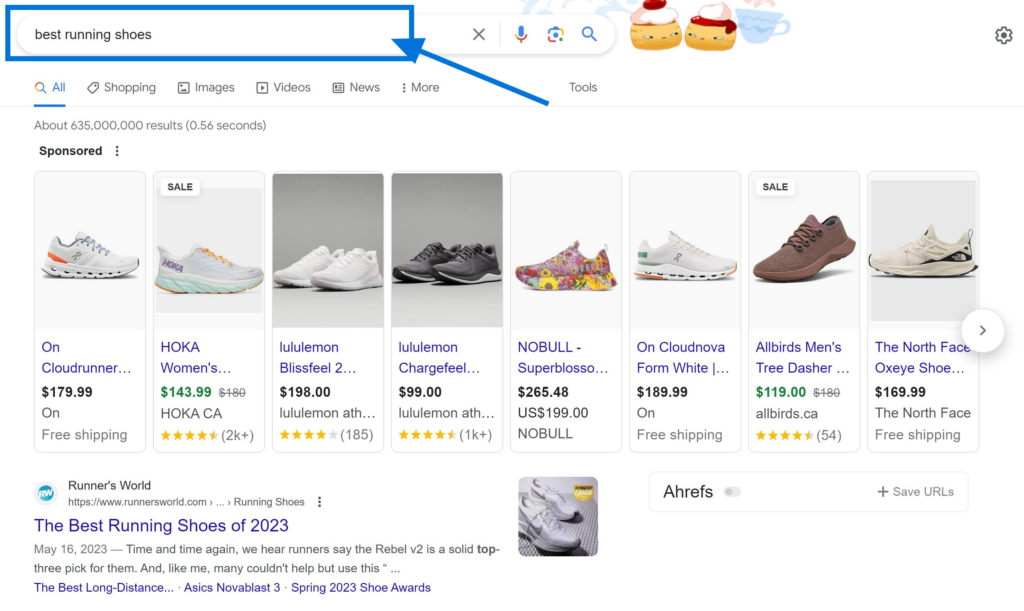
If your website sells running shoes, you can create content that showcases your top-selling products and how they compare to other brands.
By optimizing your content based on search intent, you increase the chances of ranking higher in search engine results pages (SERPs) and attracting more relevant traffic to your website.
Explanation of How Google’s Algorithm Understands Search Intent
Google’s algorithm uses machine learning models to understand user search intent better.
The algorithm analyzes various factors such as the words used in a query, location data, device type, and previous searches made by the user.
Based on this analysis, Google categorizes queries into five main types of search intent:
- Informational search intent: Users want answers or information about a specific topic.
- Navigational search intent: Users are searching for a particular website or webpage.
- Transactional search intent: Users intend to buy something or perform an action, such as signing up for a service.
- Commercial investigation search intent: Users are researching products or services before making a purchase decision.
- Commercial search intent: Users have decided on a product or service and are looking to make a purchase. They are in the final stages of the buying process.
Understanding these categories can help you create targeted content that meets users’ needs and matches their search intent.
The Impact of Search Intent on User Experience
Providing relevant content that aligns with users’ search intent improves their experience on your website. When users find what they’re looking for quickly and easily, they’re more likely to stay longer on your site and engage with your content.
On the other hand, if users don’t find what they’re looking for on your website, they’ll quickly leave and look elsewhere. It can increase your bounce rate and negatively impact your search engine rankings.
By optimizing your content based on search intent, you can improve user experience, reduce bounce rates, and increase the chances of user engagement on your website.
Understanding the 5 Categories of Search Intent
Understanding the search intent behind a user’s query is essential. Search intent refers to the reason why someone types a specific keyword into a search engine.
By identifying the intent behind the keyword, you can create content that matches what users are looking for and improve your chances of ranking higher in search results.
Informational Search Intent
One of the most common types of search intent is informational.
This type of query is when someone searches for information on a particular topic or question. The goal is to learn something new or gain knowledge about a subject.
Examples of informational queries include “how-to” questions, definitions, and research-based queries.
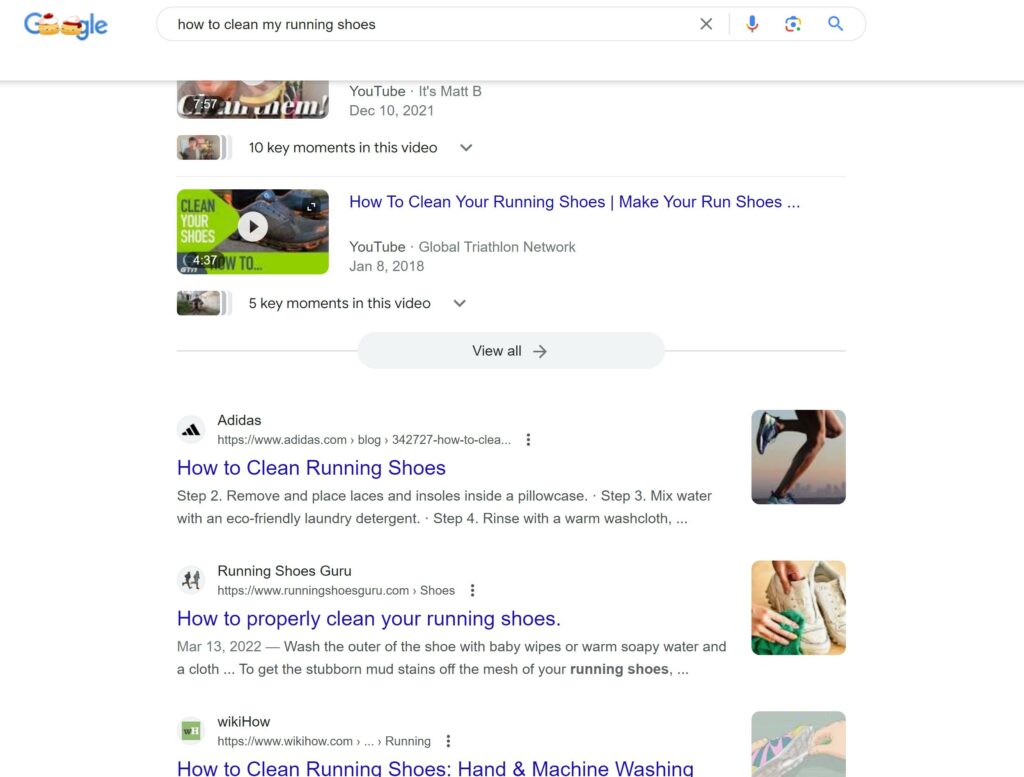
To optimize your content for informational searches, focus on providing detailed answers to related questions.
Use bullet lists or numbered lists to break down complex topics into easy-to-digest pieces.
Consider using tables or infographics to convey data or statistics visually.
Navigational Search Intent
Navigational queries are when someone uses a search engine as a navigation tool rather than typing in a specific URL directly into their browser’s address bar.
Users may be searching for well-known brands or websites they have visited before but cannot remember the exact URL.
Examples include “Facebook login,” “YouTube,” and “Walmart Boston hours.“
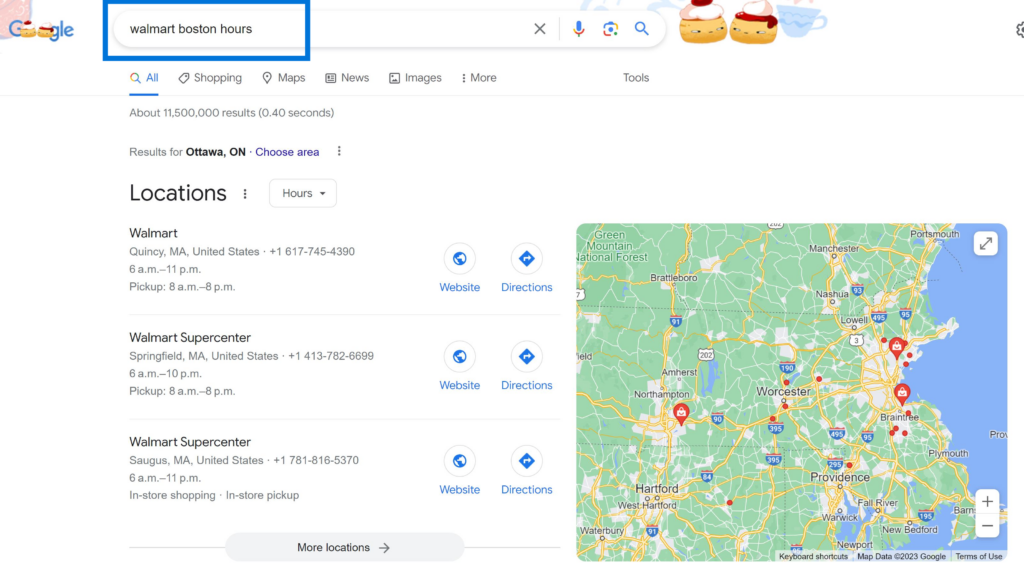
To optimize your content for navigational searches, make sure your website is easily navigable with clear menus and internal linking structures that allow users to find what they’re looking for quickly.
Transactional Search Intent
Transactional searches are when someone wants to take action, such as buying something online or making a reservation at a restaurant.
These types of queries often contain words like “buy,” “order,” “book,” or “reserve.”
Examples include “buy Nike shoes online” and “reserve a table at the best Italian restaurant in town.”

To optimize your content for transactional searches, make sure you have clear calls-to-action (CTAs) on your website.
Use persuasive language that encourages users to take action, such as “buy now” or “book your reservation today.”
Provide detailed information about the product or service being offered, including pricing, shipping options, and customer reviews.
Commercial Search Intent
Commercial search intent is a step further from informational searches. It often occurs when a user has decided to make a purchase but is looking for more specific information or options before finalizing their decision.
These types of searches often include terms such as “buy,” “price,” “review,” “deal,” or specific brands and models.
Examples of commercial search intent can be “best price for iPhone 12” or “iPhone 13 vs Samsung S21 review“.Here, the user is not merely gathering information but is in the process of decision-making, comparing options, or ready to purchase.
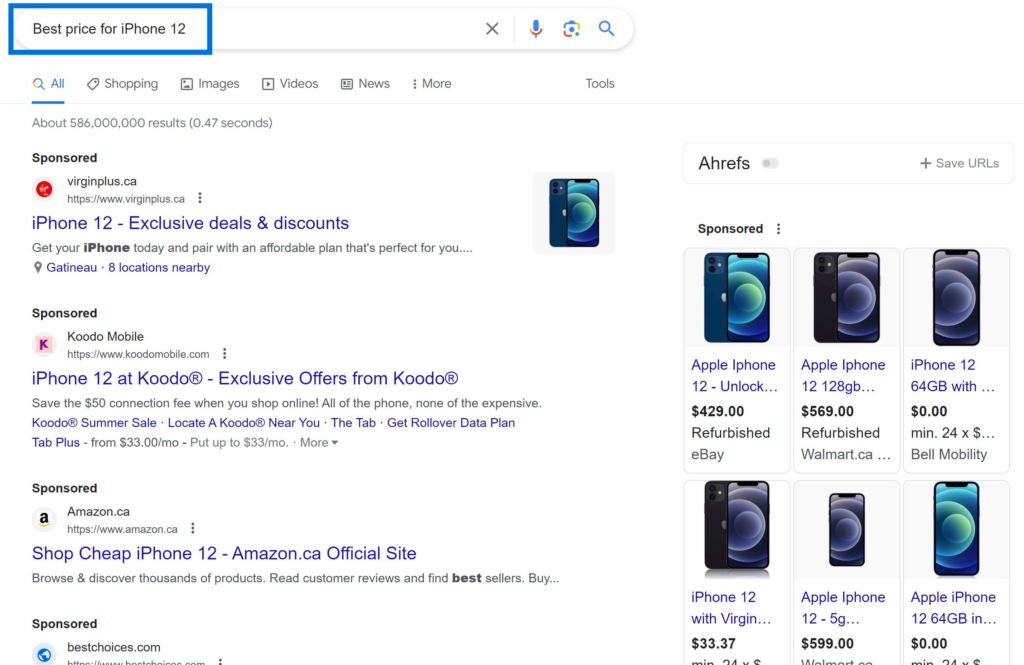
To optimize your content for commercial searches, provide in-depth product reviews, comparison articles, or detailed descriptions of your offerings.
Make sure to include clear purchasing instructions and links to the product page.
Also, transparency about pricing, warranty, shipping, and return policies can be beneficial. Showcasing customer testimonials or reviews can also build trust and tilt the decision in your favor.
Commercial Investigation Search Intent
Commercial investigation searches are when someone is researching a product or service before making a purchase decision.
These types of queries often contain words like “best,” “top-rated,” or “reviews.”
Examples include “best laptops under $1000” and “top-rated hotels in New York City.“
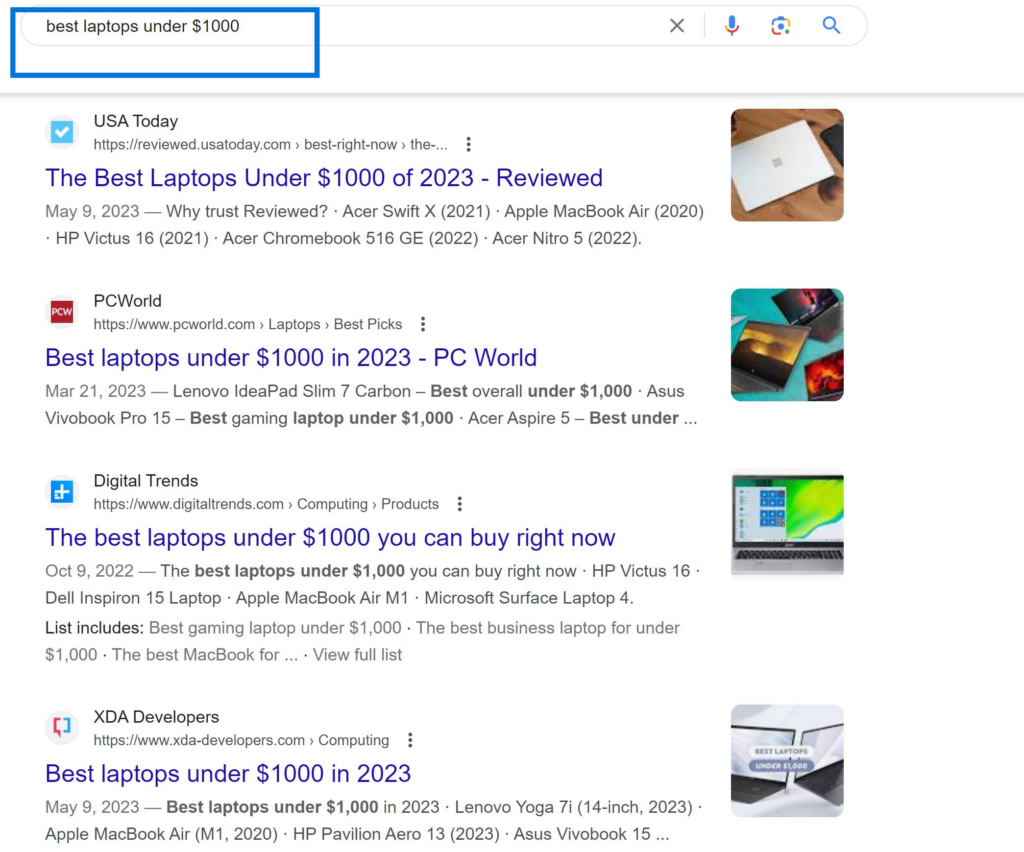
To optimize your content for commercial investigation searches, provide detailed comparisons between different options.
Use tables or side-by-side comparisons to help users make an informed decision. Include customer reviews and ratings to build trust with potential buyers.
Analyzing Top-Ranking Pages and SERP Results for Search Intent
Understanding Search Intent through Analysis of Top-Ranking Pages and SERP Results
Understanding search intent is crucial. It is the foundation of any successful SEO strategy. To understand search intent, one must analyze top-ranking pages and SERP results.
This analysis provides insights into what users are searching for, their needs and expectations, and how they interact with search results.
To analyze top-ranking pages and SERP results, you need to consider the following factors:
- Keywords: The keywords used by users in their search queries provide valuable insights into their intent.
- Content Type: The type of content that ranks on the first page of Google can tell you a lot about user intent.
- SERP Features: Google’s SERPs often include features such as featured snippets, local packs, knowledge graphs, etc., which can provide clues about user intent.
- User Behavior Metrics: User behavior metrics such as click-through rates (CTRs), bounce rates, time on site, etc., can help you understand whether your content matches user intent.
By analyzing these factors in detail, you can gain a better understanding of what users are looking for when they perform a particular search query.
Tools to Analyze SERP Results
Several tools can help you analyze SERP results and gain insights into user intent. Here are some popular ones:
SEMrush
SEMrush is an all-in-one marketing tool that allows you to track your keyword rankings, analyze backlinks, research competitors’ strategies, and much more.
Using SEMrush’s Keyword Magic Tool or Organic Research Tool will give you detailed information about your target keywords’ performance in organic searches. So, if you want to know how well your website is doing in search engine results for specific words or phrases, SEMrush can help!
Ahrefs
Ahrefs is another all-in-one SEO tool that allows you to track your keyword rankings, analyze backlinks, research competitors’ strategies, and much more. So if you want to know what keywords your competitors are ranking for, AHREFs can help you find out!
Google Analytics
Google Analytics is a free web analytics service that provides statistics and basic analytical tools for search engine optimization (SEO) purposes.
By integrating Google Analytics with your website, you can track user behavior on your site and gain insights into what users are looking for when they visit your site.
The Importance of Analyzing Competitors’ Content
Analyzing competitors’ content is an essential part of understanding search intent. By analyzing their content, you can identify gaps in the market, find new opportunities, and improve your own content to better match user intent.
To analyze competitors’ content, follow these steps:
- Identify your top competitors: Use tools like SEMrush or Ahrefs to identify your top competitors based on keyword rankings.
- Analyze their landing pages: Look at their landing pages and identify the keywords they are targeting.
- Analyze their product pages: Look at their product pages and see how they are structured and what features they offer.
- Identify gaps in the market: Look for gaps in the market that your competitors have not addressed.
- Improve your own content: Use the insights gained from analyzing competitors’ content to improve your own content.
By analyzing competitors’ content regularly, you can stay ahead of the competition and ensure that your content matches user intent.
Matching Content Type to Search Intent
Understanding Different Types of Content for Different Intent Types
Search intent refers to the reason why a user is searching for something on a search engine. It can be classified into four different categories: informational, navigational, commercial, and transactional.
Each category has a different purpose and requires different types of content to match the user’s needs.
Informational Intent
When users have an informational intent, they are looking for information on a specific topic. They want to learn more about something or find answers to their questions.
The best type of content that matches this intent is educational and informative articles such as blog posts, how-to guides, tutorials, and infographics.
For instance, if someone searches for “how to bake a cake,” Google will show them results with articles or videos that provide step-by-step instructions on baking cakes.
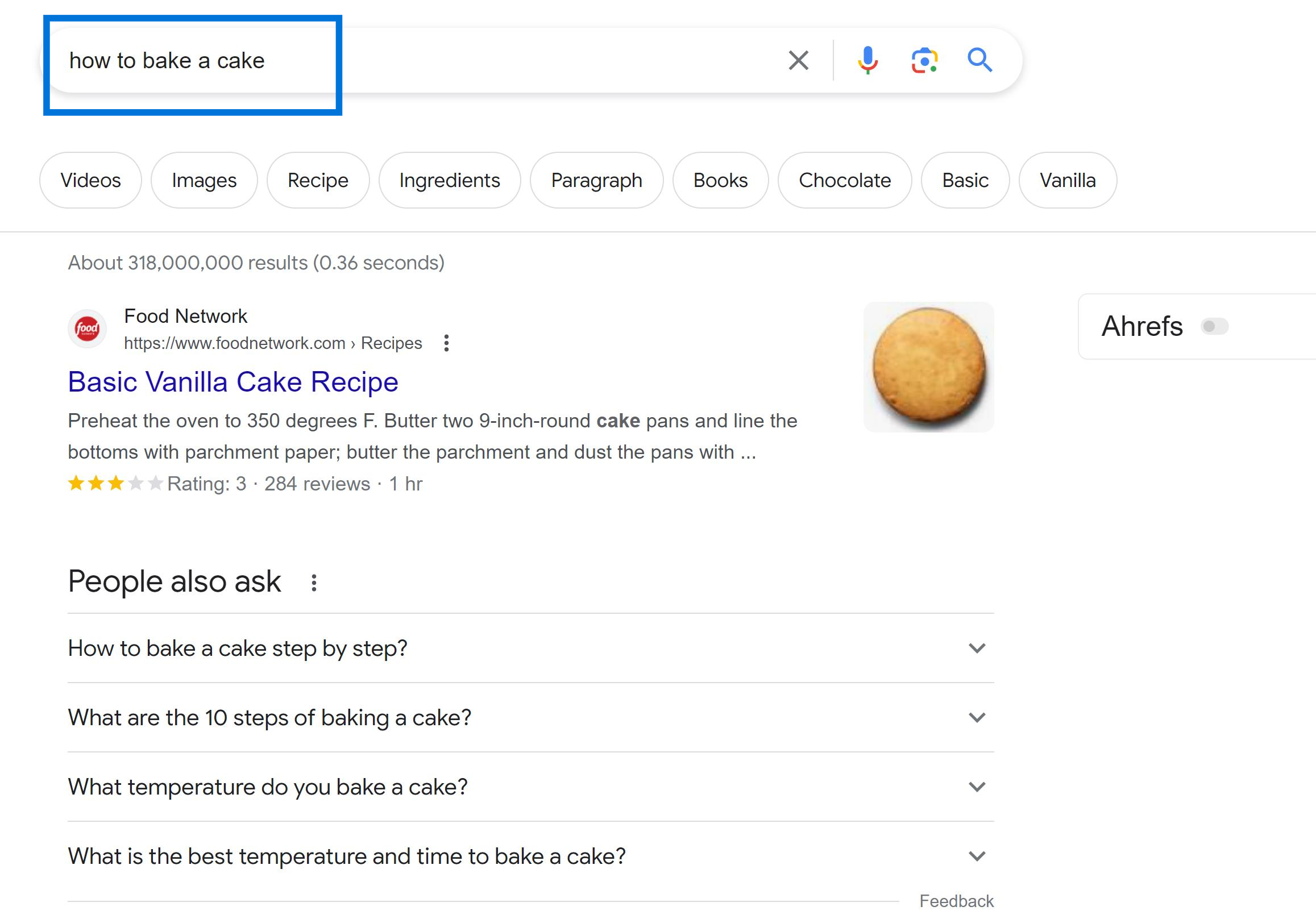
If you’re creating content targeting informational intent, ensure it’s detailed enough to answer the user’s questions comprehensively.
Navigational Intent
Users with navigational intent already know what website they want to visit but need help finding it. They use search engines instead of typing in the URL directly into their browser address bar.
This type of search query includes brand names or website names such as “Facebook login” or “YouTube.”
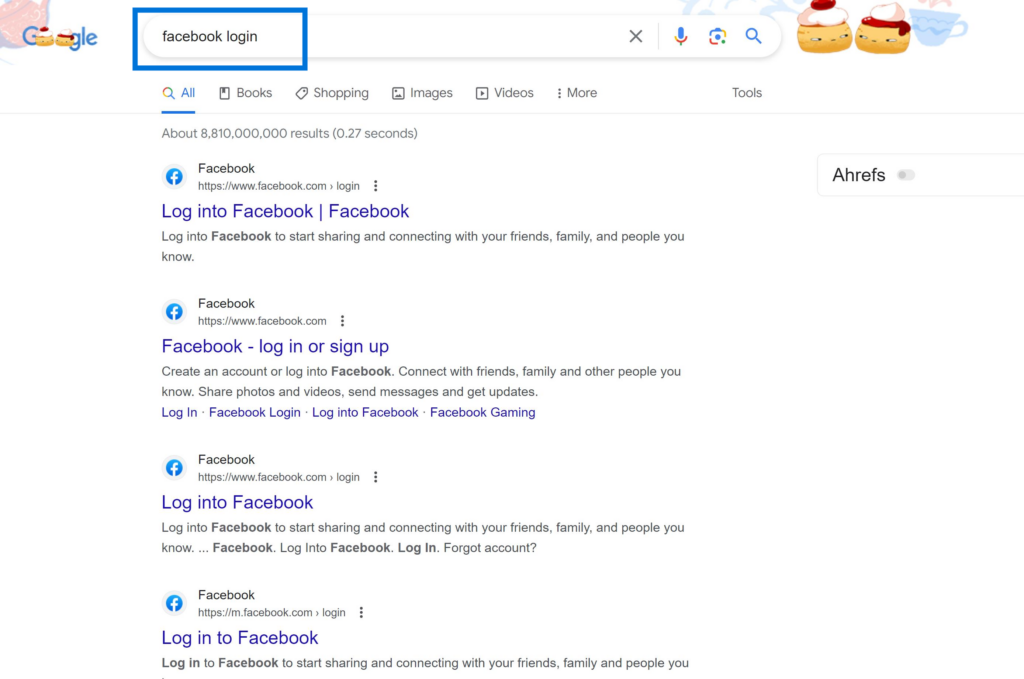
To match this type of intent effectively, create landing pages that contain essential information about your brand or website, such as contact details, location information, product descriptions, and specifications.
Commercial Intent
Commercial-intent queries are when users are researching products or services before making a purchase decision. They may not know which particular product they want yet but are comparing prices and features across multiple websites.
The best way to match commercial-intent queries is by creating product reviews (textual/video), comparison charts (table format), and buying guides (step-by-step process), among others.
For example: If someone searches for “best laptops under $1000,” Google will show them results with reviews of various laptop models along with their prices, specifications, and features.

Transactional Intent
Transactional-intent queries occur when users are ready to make a purchase. They know what they want and are looking for the best deal or location to buy it from. The content that matches this intent type includes product pages, checkout pages, and order confirmation pages.
For instance, if someone searches for “buy iPhone 12 online,” Google will show them results with links to websites where they can purchase the phone online.
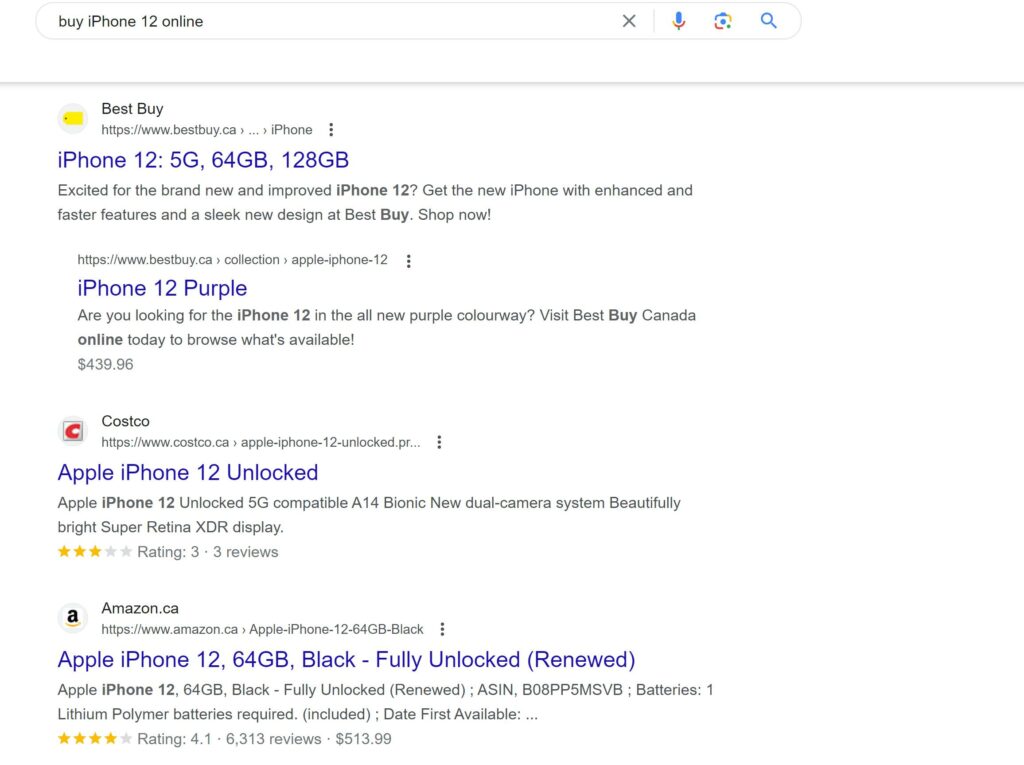
Importance of Creating Relevant Content That Matches User’s Needs
Creating relevant content that matches users’ needs is vital in SEO because search engines rank websites based on how well their content satisfies the user’s intent.
If your content doesn’t match the user’s intent type, it won’t appear at the top of search engine result pages (SERPs).
Therefore, when creating content for your website, ensure it aligns with each intent category and provides value to your target audience.
Ensure that you have a clear understanding of who your target audience is so you can create content that resonates with their needs.
Importance of Keyword Modifiers and Topic Clusters for Search Intent
Matching User’s Search Queries with Relevant Content Using Keyword Modifiers
Keyword research is an essential part of SEO. It involves identifying the keywords that people use to search for products or services that are related to your business.
However, keyword research alone is not enough to ensure that your website ranks well on search engines. You need to understand the intent behind each keyword and create content that matches the user’s search query.
This is where keyword modifiers come in. Keyword modifiers are words or phrases that you can add to your target keyword to refine its meaning and match it with the user’s search intent.
For example, if your target keyword is “running shoes,” you can add modifiers like “best,” “cheap,” “women’s,” or “reviews” to create more specific long-tail keywords like “best women’s running shoes under $100” or “reviews of cheap running shoes.”
Using keyword modifiers helps you create content that matches the user’s search intent, which improves your chances of ranking higher on search engine results pages (SERPs).
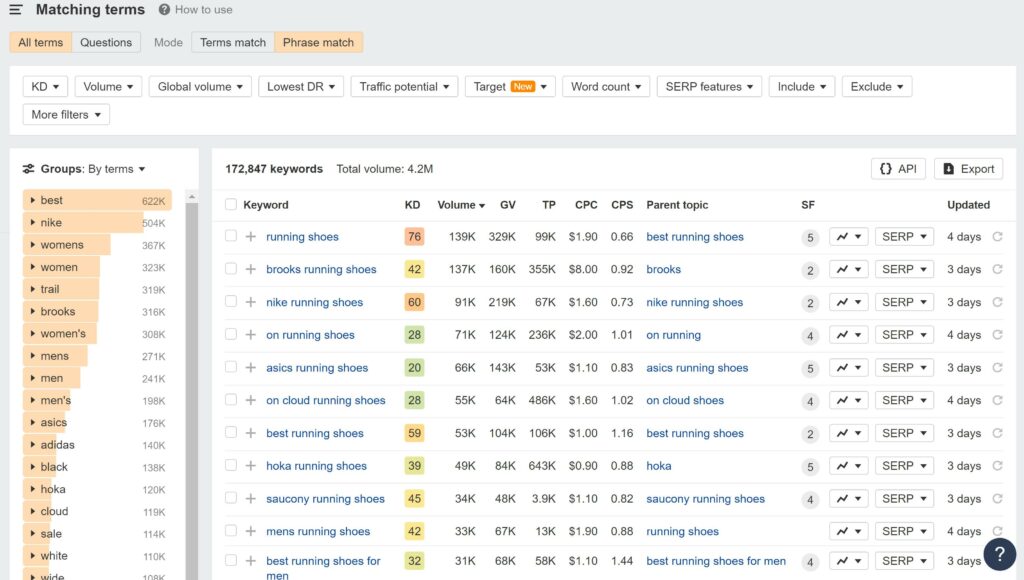
By understanding what users are searching for and creating content that meets their needs, you can attract more traffic to your website and increase conversions.
Improving Website Authority with Topic Clusters
Topic clusters are a group of interlinked web pages centered around a core topic or theme. They help improve the website’s topical authority by providing a comprehensive resource on a particular subject matter.
By organizing your content into topic clusters, you make it easier for users to find relevant information on your website.
To create a topic cluster, start by identifying a core topic or pillar page. This page should provide an overview of the main topic and link to other pages within the cluster.
Each subtopic should have its own dedicated page linked back to the pillar page.
For example, if your core topic is “digital marketing,” you could create subtopics like “SEO,” “PPC,” “Social Media Marketing,” and “Content Marketing.”
Each subtopic should have its own dedicated page with in-depth information about the topic. By interlinking these pages, you create a comprehensive resource that covers all aspects of digital marketing.

Topic clusters help improve website authority by providing a better user experience. Users can easily navigate your website and find relevant information on the topics they are interested in.
This improves engagement metrics like bounce rate, time on site, and pages per session, which are important ranking factors for search engines.
Using Keyword Modifiers and Topic Clusters Effectively
To use keyword modifiers and topic clusters effectively, start by conducting thorough keyword research to identify the keywords that people use to search for products or services related to your business.
Once you have identified your target keywords, use keyword modifiers to refine their meaning and match them with the user’s search intent.
Next, organize your content into topic clusters centered around core topics or themes related to your business.
Create pillar pages that provide an overview of each topic and link to other pages within the cluster.
Use internal linking to connect these pages and make it easier for users to navigate your website.
Finally, monitor your website’s performance using analytics tools like Google Analytics or Ahrefs.
Track key metrics like organic traffic, bounce rate, time on site, and conversion rate to see how well your content is performing. Use this data to make informed decisions about how to optimize your content further.
Writing Compelling Meta Descriptions for Search Intent
Importance of Meta Descriptions in Attracting Users to Click Through a Website
Meta descriptions are the snippets of text that appear under the website’s URL on search engine result pages. These descriptions play a crucial role in attracting users to click through to your website.
A well-crafted meta description can provide potential visitors with an accurate and enticing summary of what they can expect from your site.
To write compelling meta descriptions, it is essential to understand your target audience’s search intent.
Search intent refers to the reason behind a user’s search query. It could be informational, navigational, or transactional. Understanding the user’s search intent can help you craft meta descriptions that match their needs and encourage them to click through.

Tips on Writing Compelling Meta Descriptions That Match User’s Needs
Here are some tips for writing compelling meta descriptions that match user’s needs:
- Use Commercial Keywords: Incorporate commercial keywords into your meta description as they have higher conversion rates than non-commercial keywords.
- Use Words and Terms That Resonate With Your Target Audience: Use words and terms that resonate with your target audience in your meta description.
- Make Sure Your Description Is Accurate: Ensure that your meta description accurately reflects the content on your page.
- Keep It Short and Sweet: Keep your meta description short (between 120-155 characters) but sweet enough to catch the reader’s attention.
- Use Active Voice: Write using active voice instead of passive voice as it is more engaging and persuasive.
- Include a Call-to-Action (CTA): Include a CTA in your meta description as it encourages users to take action.
- Add Emotion: Add emotion into your meta description by using powerful words such as “amazing,” “unbelievable,” or “life-changing.“
How Meta Descriptions Impact Click-Through Rates (CTR)
A well-crafted meta description can significantly impact your website’s click-through rate.
A meta description that is engaging, informative, and accurately reflects the content on the page can entice users to click through to your website.
In contrast, a poorly written or irrelevant meta-description can discourage users from clicking through.
Studies have shown that an optimized meta description can increase click-through rates by up to 30%. Therefore, it is crucial to invest time and effort into crafting compelling meta descriptions that match users’ needs.
Differentiating Content Angle While Considering Search Intent
Understanding User Needs to Differentiate Content Angle
When creating content, it is important to consider the user’s needs and search intent. Search intent refers to the reason behind a user’s search query. By understanding this, you can differentiate your content angle to provide valuable information that meets their needs.
To differentiate your content angle based on user needs, start by researching the keywords related to your topic.
Look for patterns in the types of queries users are making and what they are looking for. This will help you understand their search intent.
For example, if you are writing about “best coffee shops,” some users may be looking for specific locations near them.
In contrast, others may be interested in the atmosphere or specialty drinks offered. By understanding these different needs, you can create content that caters to each type of user.
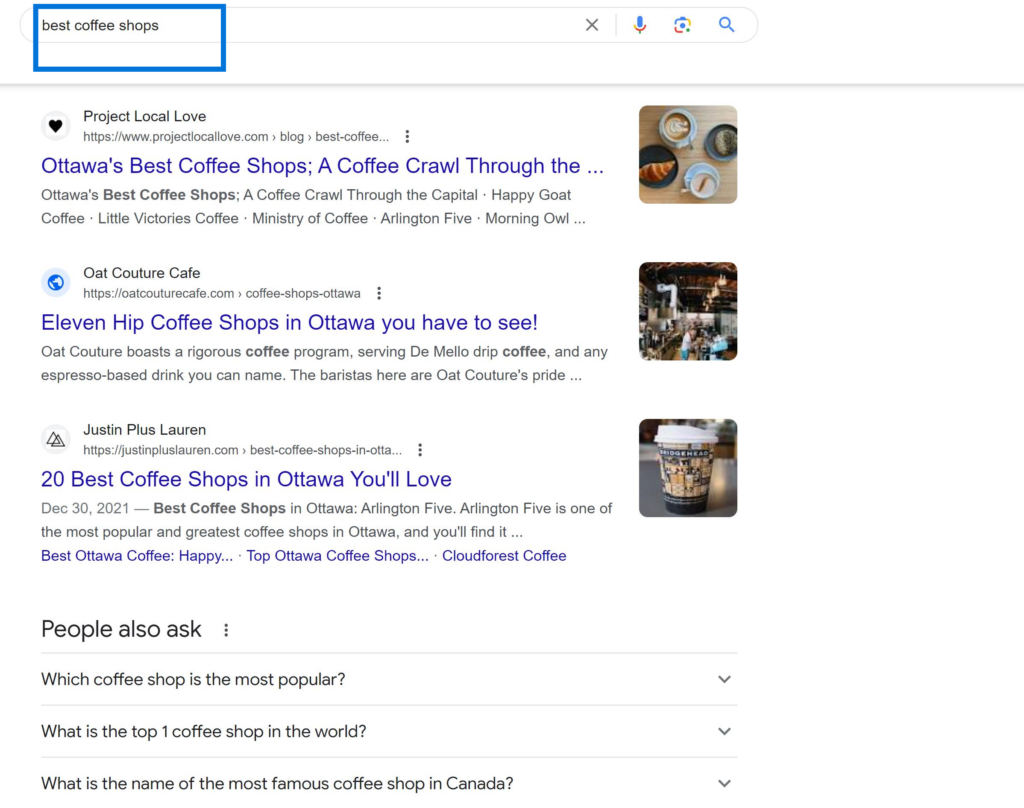
Examples of Different Angles for the Same Keyword
Once you understand the different types of search intent related to your topic, you can create multiple angles for your content. This will help you reach a wider audience and provide more value to users.
Continuing with our coffee shop example, here are some different angles that could be used:
- Location-based: “Top-rated Coffee Shops Near You“
- Specialty drinks: “10 Unique Coffee Shops with Must-Try Drinks“
- Atmosphere-focused: “Cozy Coffee Shops Perfect for Relaxing“
By creating unique angles like these, you can differentiate yourself from competitors who may only focus on one aspect of the topic.
The Importance of Creating Unique and Valuable Content
Creating unique and valuable content is crucial. Not only does it help differentiate your website from competitors, but it also provides value to users, which leads to higher engagement rates and better rankings on search engines.
When creating content with different angles based on search intent, make sure each piece offers something new and valuable compared to other content available on the topic. This could be in the form of new information, a unique perspective, or a more in-depth analysis.
For example, if you are writing about “best coffee shops,” make sure to include lesser-known locations or highlight specific menu items that set them apart from others.
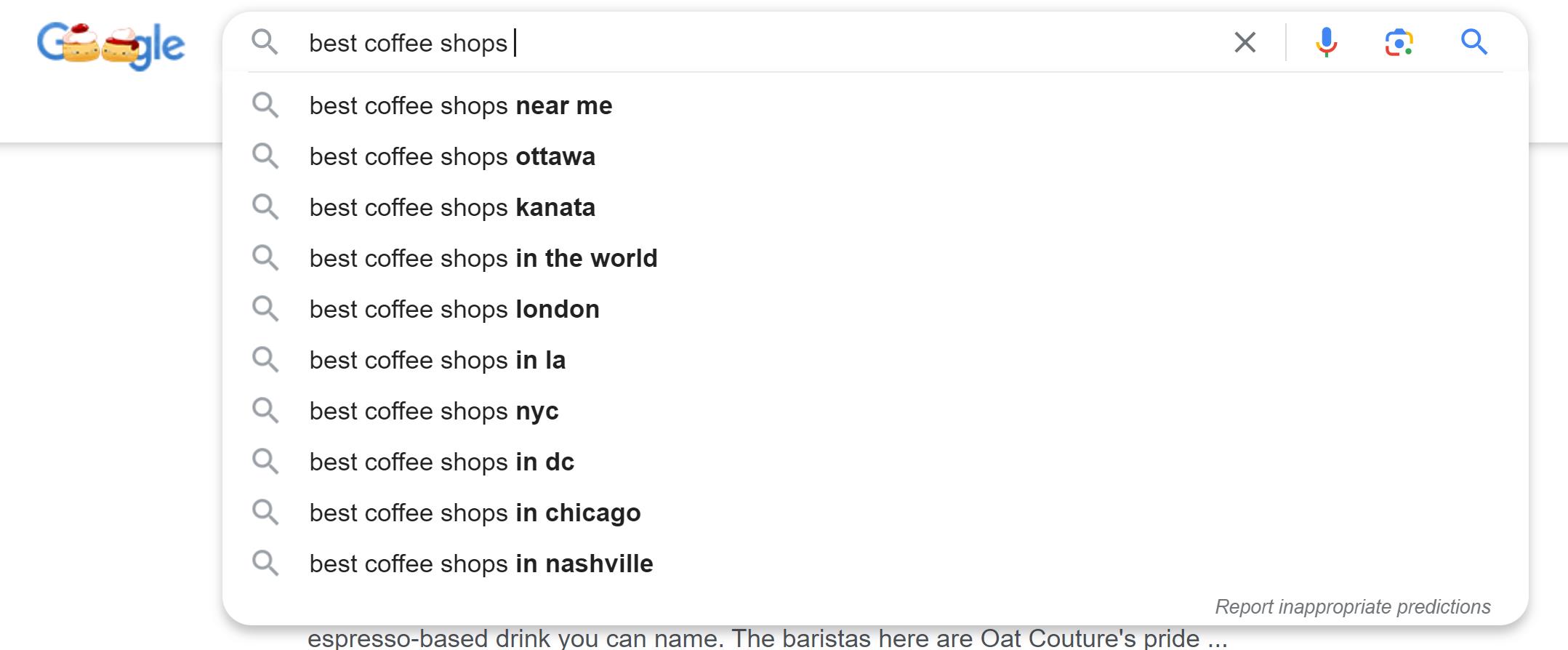
By providing this type of valuable information, users are more likely to engage with your content and share it with others.
Optimizing for Informational Intent Audiences and Bottom Line
Understanding Informational Intent and Target Audience
To optimize content for informational intent audiences, it is important first to understand what informational intent means.
Informational intent refers to the type of search query that a user makes when they are looking for information on a particular topic or subject.
These searches are often conducted by top-of-the-funnel consumers who are in the early stages of their research process.
When creating content for an informational intent audience, it is essential to keep your target audience in mind. You need to understand what kind of information your target audience is looking for and how you can provide value to them through your content.
This requires thorough research into the keywords and phrases that your target audience uses when conducting informational searches, also known as informational keywords.
Tips on Creating Valuable and Informative Content
Creating valuable and informative content is crucial when optimizing for an informational intent audience.
Here are some tips on how to create high-quality content:
- Focus on providing answers: When creating content, focus on answering the questions that your target audience may have about a particular topic or subject. This will help establish you as an authority in your industry while also providing value to your readers.
- Use data and statistics: Incorporating data and statistics into your content helps provide additional context while also making it more credible.
- Use different formats: Experiment with different types of formats, such as infographics, videos, podcasts, etc., to make your content more engaging.
- Keep it simple: Avoid using complex language or jargon that may be difficult for your target audience to understand. Instead, use simple language that is easy to read and comprehend.
Balancing User’s Needs with Business Goals
While creating valuable content is essential when optimizing for an informational intent audience, it’s also important not to lose sight of business goals.
To achieve this balance between user needs and business goals, consider these factors:
- Content format: The type of content you create should align with your business goals. For example, if you’re looking to drive traffic to a landing page, consider creating blog posts that link back to that page.
- Commercial intent: Informational searches can lead to commercial investigation and eventually result in transactional or product-related queries. Therefore, it’s important to integrate commercial intent into your content strategy.
- Knowledge panels: Google’s knowledge panels are becoming increasingly important for informational searches. Ensure that your content is optimized for these panels by including relevant information such as definitions, FAQs, and other crucial details.
By balancing user needs with business goals and keeping these tips in mind when optimizing for an informational intent audience, you can create high-quality content that not only provides value but also helps drive conversions.
The Significance of Understanding Search Intent for Successful SEO Strategies
Importance of Understanding Search Intent in Developing Successful SEO Strategies
Search intent refers to the reason behind a user’s search query. It is the motive that drives users to type specific keywords or phrases into search engines. Understanding search intent is crucial when developing successful SEO strategies because it helps businesses create relevant, valuable, and engaging content that meets users’ needs.
Without understanding search intent, businesses may end up targeting the wrong audience or creating irrelevant content that fails to meet users’ expectations. This can negatively impact website traffic, engagement, and conversions.
To develop successful SEO strategies, businesses must identify the different types of search intent and tailor their content accordingly. For instance, informational searches require educational content that answers users’ questions, while transactional searches require product pages or landing pages that encourage conversions.
How Understanding Search Intent Helps Create Relevant, Valuable, and Engaging Content
Understanding search intent helps businesses create relevant, valuable, and engaging content by providing insights into what users are searching for and why they are searching for it.
By analyzing user behavior data such as click-through rates (CTR), bounce rates, time on page, and conversion rates, businesses can gain a deeper understanding of their target audience’s needs and preferences.
This information can then be used to create content that speaks directly to users’ pain points or interests while providing solutions or information that satisfies their queries. By doing so, businesses can improve their website’s relevance in the eyes of both users and search engines.
Moreover, creating high-quality content tailored towards specific types of search intent also improves website traffic by attracting more qualified leads who are interested in what the business has to offer.
The Impact of Search Intent on Website Traffic, Engagement, and Conversions
Search intent has a significant impact on website traffic because it determines whether visitors find a website’s content relevant or not.
If visitors find the content irrelevant or unhelpful, they are likely to leave the website quickly, resulting in a high bounce rate.
However, if visitors find the content relevant and valuable, they are more likely to engage with it by spending more time on the page or clicking through to other pages on the website.
This improves engagement metrics such as session duration and pages per session.
Moreover, understanding search intent can also impact conversions positively by providing businesses with insights into what types of content or offers are most likely to encourage users to take action.
For instance, creating landing pages that target transactional search intent with clear calls-to-action (CTAs) can improve conversion rates significantly.
Additional FAQs on Search Intent
How do I Identify User Search Intent?
You can identify user search intent by analyzing the keywords they use in their queries. Look for patterns such as question-based queries or keywords related to product reviews or comparisons.
Why is Matching Content Type Important for Search Intent?
Matching content type to search intent is important because users expect a certain format for the information they are seeking.
For example, users searching for “how-to” information may expect a video or step-by-step guide.
How do Keyword Modifiers and Topic Clusters Help with Search Intent?
Keyword modifiers and topic clusters can help you better understand user needs and create content that aligns with their search intent.
By using related keywords and organizing your content around topics, you can provide comprehensive information that meets user needs.
What Should I Include in my Meta Descriptions to Optimize for Search Intent?
To optimize your meta descriptions for search intent, include a clear summary of what your page offers and how it addresses the user’s query.
Use persuasive language to encourage clicks while accurately representing your content.
How Can I Differentiate My Content Angle While Considering Search Intent?
To differentiate your content angle while considering search intent, focus on providing unique insights or perspectives on the topic. Look for gaps in existing content and fill them with original research or analysis.
How Long Does It Take to See Results from Optimizing for Search Intent?
Results from optimizing for search intent may vary depending on factors such as competition level, website authority, and the quality of your content.
However, by consistently creating high-quality content that aligns with user needs, you can expect to see improvements in rankings and traffic over time.
Conclusion: Understanding and Optimizing for Search Intent in SEO
Search intent is the foundation of successful SEO strategies. It is crucial to understand what users are searching for, their motivations, and the type of content they expect to find.
By optimizing your content for search intent, you can improve your rankings, attract more qualified traffic, and increase conversions.
Throughout this article, we have discussed the importance of search intent in SEO. We have explored the four categories of search intent and how to analyze top-ranking pages and SERP results to identify user needs.
We have also looked at how to match content type to search intent, use keyword modifiers and topic clusters, write compelling meta descriptions, differentiate content angle while considering search intent, optimize for informational intent audiences and bottom line, and analyze fluctuations in rankings.
It’s clear that understanding search intent is essential for creating successful SEO strategies.
By aligning your content with user needs, you can improve engagement metrics such as bounce rate and time on the page. This will send positive signals to Google’s algorithm that your website provides value to users.
To optimize for search intent effectively, it’s crucial to follow Google’s E-A-T concept (Expertise-Authoritativeness-Trustworthiness). This means creating high-quality content that demonstrates expertise in your field, establishes authority through backlinks from reputable sources, and builds trust with readers by providing accurate information.
In summary, optimizing for search intent should be a top priority when developing an SEO strategy. By focusing on user needs rather than just keywords or rankings alone, you can create valuable content that drives traffic and conversions.
